
The Carolina parakeet, or Carolina conure, is an extinct species of small green neotropical parrot with a bright yellow head, reddish orange face and pale beak that was native to the eastern, Midwest and plains states of the United States. It was the only indigenous parrot within its range, as well as one of only three parrot species native to the United States. The Carolina parakeet was found from southern New York and Wisconsin to Kentucky, Tennessee and the Gulf of Mexico, from the Atlantic seaboard to as far west as eastern Colorado. It lived in old-growth forests along rivers and in swamps. It was called puzzi la née or pot pot chee by the Seminole and kelinky in Chickasaw. Though formerly prevalent within its range, the bird had become rare by the middle of the 19th century. The last confirmed sighting in the wild was of the ludovicianus subspecies in 1910. The last known specimen perished in captivity at the Cincinnati Zoo in 1918 and the species was declared extinct in 1939.

The Atlantic Coast Conference (ACC) is a collegiate athletic conference located in the eastern United States. Headquartered in Greensboro, North Carolina, the ACC's fifteen member universities compete in the National Collegiate Athletic Association (NCAA)'s Division I. ACC football teams compete in the NCAA Division I Football Bowl Subdivision. The ACC sponsors competition in twenty-five sports with many of its member institutions held in high regard nationally. Current members of the conference are Boston College, Clemson University, Duke University, Georgia Institute of Technology, Florida State University, North Carolina State University, Syracuse University, the University of Louisville, the University of Miami, the University of North Carolina, the University of Notre Dame, the University of Pittsburgh, the University of Virginia, Virginia Polytechnic Institute and State University, and Wake Forest University.

The East Coast of the United States, also known as the Eastern Seaboard, the Atlantic Coast, and the Atlantic Seaboard, is the coastline along which the Eastern United States meets the North Atlantic Ocean. The eastern seaboard contains the coastal states and areas east of the Appalachian Mountains that have shoreline on the Atlantic Ocean, namely, Maine, New Hampshire, Massachusetts, Rhode Island, Connecticut, New York, New Jersey, Delaware, Maryland, Virginia, North Carolina, South Carolina, Georgia, and Florida.
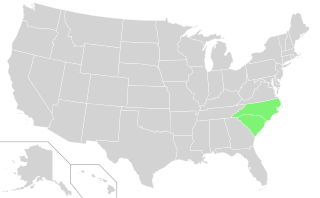
The Carolinas are the U.S. states of North Carolina and South Carolina, considered collectively. They are bordered by Virginia to the north, Tennessee to the west, and Georgia to the southwest. The Atlantic Ocean is to the east.
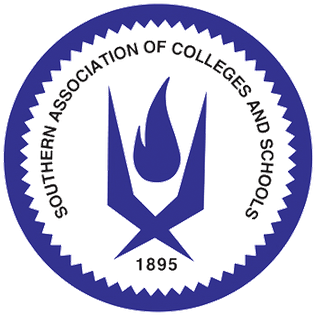
The Southern Association of Colleges and Schools (SACS) is an educational accreditor recognized by the United States Department of Education and the Council for Higher Education Accreditation. This agency accredits over 13,000 public and private educational institutions ranging from preschool to college level in the Southern United States. Its headquarters are in North Druid Hills, Georgia, near Decatur, in the Atlanta metropolitan area.

The Atlantic Coast Line Railroad was a United States Class I railroad formed in 1900, though predecessor railroads had used the ACL brand since 1871. In 1967 it merged with long-time rival Seaboard Air Line Railroad to form the Seaboard Coast Line Railroad. Much of the original ACL network has been part of CSX Transportation since 1986.

Roy Allen Williams is an American retired college basketball coach who served as the men's head coach for the North Carolina Tar Heels for 18 seasons and the Kansas Jayhawks for 15 seasons. He was inducted into the College Basketball Hall of Fame in 2006 and the Basketball Hall of Fame in 2007.
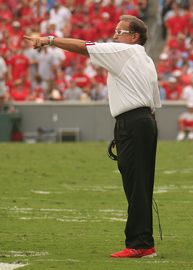
Charles Michael Amato is a former American football coach and former player. He was most recently the defensive coordinator for the Akron Zips football team. He served as the head football at North Carolina State University from 2000 to 2006, compiling a record of 49–37. On January 17, 2007, Amato returned to Florida State, where he had coached as assistant for nearly two decades before moving to NC State, as executive associate head coach and linebackers coach, a position he held for three seasons.

Norman Leslie Sloan Jr. was an American college basketball player and coach. Sloan was a native of Indiana and played college basketball and football at North Carolina State University. He began a long career as a basketball coach months after graduating from college in 1951, and he was the men's basketball head coach at Presbyterian College, The Citadel, North Carolina State University, and two stints as at the University of Florida. Over a career that spanned 38 seasons, Sloan was named conference coach of the year five times and won the 1974 national championship at North Carolina State, his alma mater. He was nicknamed "Stormin' Norman" due to his combative nature with the media, his players, and school administrators, and his collegiate coaching career ended in controversy when Florida's basketball program was under investigation in 1989, though Sloan claimed that he was treated unfairly.
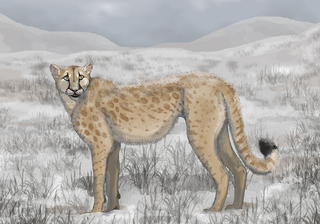
The American cheetah is either of two feline species of the extinct genus Miracinonyx, endemic to North America during the Pleistocene epoch and morphologically similar to the modern cheetah. These cats were originally known from fragments of skeletons, but nearly complete skeletons have been recovered from Natural Trap Cave in northern Wyoming.
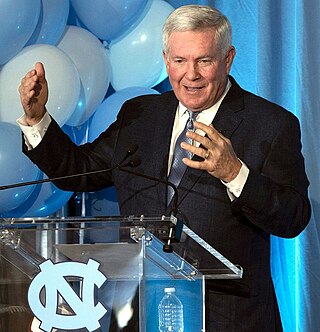
William Mack Brown is an American college football coach. He is currently in his second stint as the head football coach for the University of North Carolina, where he first coached from 1988 until departing in 1997, when he left Chapel Hill to become head coach for the University of Texas. In 2018, Brown was inducted into the College Football Hall of Fame. Two days after Carolina fired Larry Fedora in November 2018, Brown was announced to return as the Tar Heels' head coach after a five-year hiatus from coaching, which he spent as an ESPN analyst.
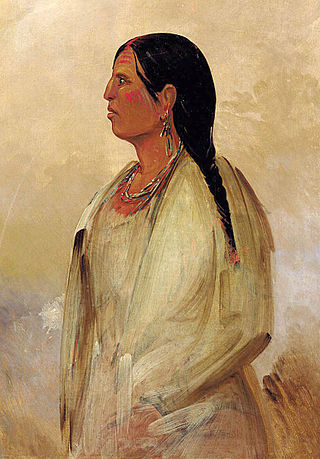
Indigenous peoples of the Southeastern Woodlands, Southeastern cultures, or Southeast Indians are an ethnographic classification for Native Americans who have traditionally inhabited the area now part of the Southeastern United States and the northeastern border of Mexico, that share common cultural traits. This classification is a part of the Eastern Woodlands. The concept of a southeastern cultural region was developed by anthropologists, beginning with Otis Mason and Frank Boas in 1887. The boundaries of the region are defined more by shared cultural traits than by geographic distinctions. Because the cultures gradually instead of abruptly shift into Plains, Prairie, or Northeastern Woodlands cultures, scholars do not always agree on the exact limits of the Southeastern Woodland culture region. Shawnee, Powhatan, Waco, Tawakoni, Tonkawa, Karankawa, Quapaw, and Mosopelea are usually seen as marginally southeastern and their traditional lands represent the borders of the cultural region.

Spanish Florida was the first major European land claim and attempted settlement in North America during the European Age of Discovery. La Florida formed part of the Captaincy General of Cuba, the Viceroyalty of New Spain, and the Spanish Empire during Spanish colonization of the Americas. While its boundaries were never clearly or formally defined, the territory was initially much larger than the present-day state of Florida, extending over much of what is now the southeastern United States, including all of present-day Florida plus portions of Georgia, Alabama, Mississippi, North Carolina, South Carolina, and Louisiana. Spain's claim to this vast area was based on several wide-ranging expeditions mounted during the 16th century. A number of missions, settlements, and small forts existed in the 16th and to a lesser extent in the 17th century; they were eventually abandoned due to pressure from the expanding English and French colonial settlements, the collapse of the native populations, and the general difficulty in becoming agriculturally or economically self-sufficient. By the 18th century, Spain's control over La Florida did not extend much beyond a handful of forts near St. Augustine, St. Marks, and Pensacola, all within the boundaries of present-day Florida.

The North Carolina Tar Heels football team represents the University of North Carolina at Chapel Hill in the sport of American football or Gridiron Football. The Tar Heels play in the Football Bowl Subdivision (FBS) of the National Collegiate Athletic Association (NCAA) and the Coastal Division of the Atlantic Coast Conference (ACC).

The East Carolina Pirates are a college football team that represents East Carolina University. The team is a member of the American Athletic Conference, which is in Division I Football Bowl Subdivision of the National Collegiate Athletic Association (NCAA). Mike Houston is the head coach.

The Seminole bat is a species of bat in the family Vespertilionidae.

The South Carolina Gamecocks football program represents the University of South Carolina. The Gamecocks compete in the Football Bowl Subdivision of the National Collegiate Athletic Association (NCAA) and the Eastern Division of the Southeastern Conference. The team's head coach is Shane Beamer. They play their home games at Williams–Brice Stadium.

Sabal palmetto, also known as cabbage palm, cabbage palmetto, sabal palm, blue palmetto, Carolina palmetto, common palmetto, Garfield's tree, and swamp cabbage, is one of 15 species of palmetto palm. It is native to the Southern United States and the West Indies.

The Deptford culture was an archaeological culture in southeastern North America characterized by the appearance of elaborate ceremonial complexes, increasing social and political complexity, mound burial, permanent settlements, population growth, and an increasing reliance on cultigens.
David Moore is an American archaeologist and historian. He is best known for his work on the Blackbeard's Queen Anne's Revenge Shipwreck Project. The Queen Anne's Revenge was the flagship of the infamous pirate Blackbeard. He used her for less than a year, but she was an effective tool in his prize-taking.




















